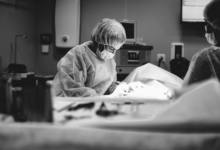Exploring the Potential of Stem Cell Therapy for Skin Rejuvenation

Among skincare procedures, stem cell therapy has become a prominent contender for achieving youthful and vibrant skin. Stem cells boast remarkable regenerative abilities that hold promise for combating age-related skin issues. The following article will delve into the potential of stem cell therapy for skin rejuvenation, examining its mechanisms, benefits, applications, and considerations.
Understanding Stem Cell Therapy:
With stem cell therapy, damaged tissues can be renewed and repaired because of the amazing regenerative powers of stem cells. Because stem cells may differentiate into a wide variety of specialized cell types, they are highly suitable for tissue regeneration in a variety of biological systems. In the field of skin rejuvenation, this novel treatment method aims to stimulate the growth of new, lively skin cells in order to repair aging skin. The goal of stem cell therapy is to improve the elasticity, tone, and texture of the skin to revitalize it. This helps to minimize apparent symptoms of aging and provides a radiant complexion. This cutting-edge technique represents a promising frontier in the field of regenerative medicine, offering renewed hope for individuals seeking effective solutions to combat the effects of time on their skin.
The Science Behind Skin Rejuvenation:
Investigating stem cell anti aging therapy’s potential for skin rejuvenation reveals an exciting field of research and invention. With their amazing capacity to differentiate into a wide variety of cell types, stem cells present a promising treatment option for anti-aging symptoms. Their ability to increase skin regeneration and induce collagen formation is essential to this strategy. As we age, the skin’s scaffolding protein, collagen, gradually decreases, causing suppleness to be lost and wrinkles to appear. In order to restore the firmness and vibrancy of the skin, stem cell therapy works by increasing the amount of collagen in the skin and encouraging the production of new collagen fibers. To further enhance the rejuvenation process, stem cells also release an abundance of growth factors and cytokines that coordinate tissue repair and regeneration.
Application and Procedure:
The procedure of using stem cell therapy for skin rejuvenation is usually a thorough one that starts with the patient’s own body being used to collect stem cells. These stem cells are frequently extracted from bone marrow or adipose (fat) tissue. To ensure their maximum activity, these collected stem cells go through a rigorous processing regimen that isolates and purifies them. Following this, the concentrated stem cells are carefully injected into predetermined skin regions through the use of minimally invasive methods like microneedling or microinjections. As an alternative, topical application of skincare products enhanced with cytokines and growth factors produced from stem cells can promote skin regeneration.
Expected Results and Considerations:
Over time, patients receiving stem cell therapy for skin rejuvenation should anticipate progressive improvements in their skin tone, texture, and general look. After treatment, many patients report firmer, smoother, and more youthful-looking skin; however, individual outcomes may differ depending on age, skin type, and treatment regimen. It’s important to remember that several sessions can be needed to get the best outcomes, and maintenance sessions might be needed to extend the therapy’s effects. It’s also critical to address any possible hazards or concerns and decide if you are a good candidate for stem cell therapy by speaking with a licensed healthcare professional.
Understanding Stem Cell Mechanisms
Stem cell therapy for skin rejuvenation capitalizes on the remarkable regenerative capabilities of stem cells. Undifferentiated stem cells are remarkably capable of differentiating into several cell types, including skin cells. Stem cells can be injected or applied topically to the skin to initiate the generation of new collagen and elastin, which are vital for preserving the firmness and suppleness of the skin. Stem cells can also encourage cell turnover, which aids in the replacement of unhealthy or aging skin cells with healthier ones. This regenerative process can lead to smoother, more youthful-looking skin with improved texture and tone.
Conclusion:
Stem cell therapy holds promise for skin rejuvenation, tapping into the regenerative power of stem cells to improve skin texture and tone. Though more research is required to grasp its mechanisms and long-term impacts fully, initial findings hint at its potential in anti-aging skincare. With ongoing advancements in stem cell technology, we can expect continued innovation in this realm.







